Are you fascinated by high-speed rail and wondering How Fast Does Bullet Train Travel? The answer is that modern bullet trains can reach operational speeds of up to 350 km/h (220 mph) and even exceed 500 km/h (310 mph) during testing, as highlighted by leading railway technology sources. At TRAVELS.EDU.VN, we help you explore these marvels and offer tailored travel solutions that bring these experiences closer to you. Discover the benefits of bullet train travel and how it is revolutionizing transportation, and plan your high-speed adventure with us.
1. What Exactly Is a Bullet Train and How Fast Does It Travel?
A bullet train, often referred to as a high-speed train (HST), is a railway system designed to operate at significantly higher speeds than traditional trains. The term “bullet train” is commonly associated with Japan’s Shinkansen, which was the first dedicated high-speed rail line. However, many countries now operate their own versions of bullet trains.
- Typical Speeds: Commercially operating bullet trains generally travel at speeds ranging from 200 km/h (124 mph) to 350 km/h (220 mph).
- Testing Speeds: During testing and development, some bullet trains have achieved speeds exceeding 500 km/h (310 mph). For example, the Shanghai Maglev reached a record speed of 501 km/h (311 mph).
- Factors Affecting Speed: The actual speed of a bullet train can be influenced by factors such as track conditions, weather, and the specific model of the train.
2. What Are the Fastest Bullet Trains Currently in Operation?
Several bullet trains around the world stand out for their exceptional speeds. These trains have not only revolutionized travel within their respective countries but have also set benchmarks for high-speed rail technology.
| Train Name | Country | Operational Speed | Record Speed |
|---|---|---|---|
| Shanghai Maglev | China | 460 km/h (286 mph) | 501 km/h |
| CR Harmony | China | 350 km/h (217 mph) | 486 km/h |
| CR Fuxing | China | 350 km/h (217 mph) | 420 km/h |
| DB ICE | Germany | 330 km/h (205 mph) | 368 km/h |
| SNCF TGV | France | 320 km/h (199 mph) | 574.8 km/h |
| JR Shinkansen | Japan | 320 km/h (199 mph) | 443 km/h |
| ONCF Al Boraq | Morocco | 320 km/h (199 mph) | 357 km/h |
| Renfe AVE 103 | Spain | 310 km/h (193 mph) | 403.7 km/h |
| Korail KTX-Sancheon | South Korea | 305 km/h (190 mph) | 421.4 km/h |
| Trenitalia Frecciarossa 1000 | Italy | 300 km/h (186 mph) | 389 km/h |
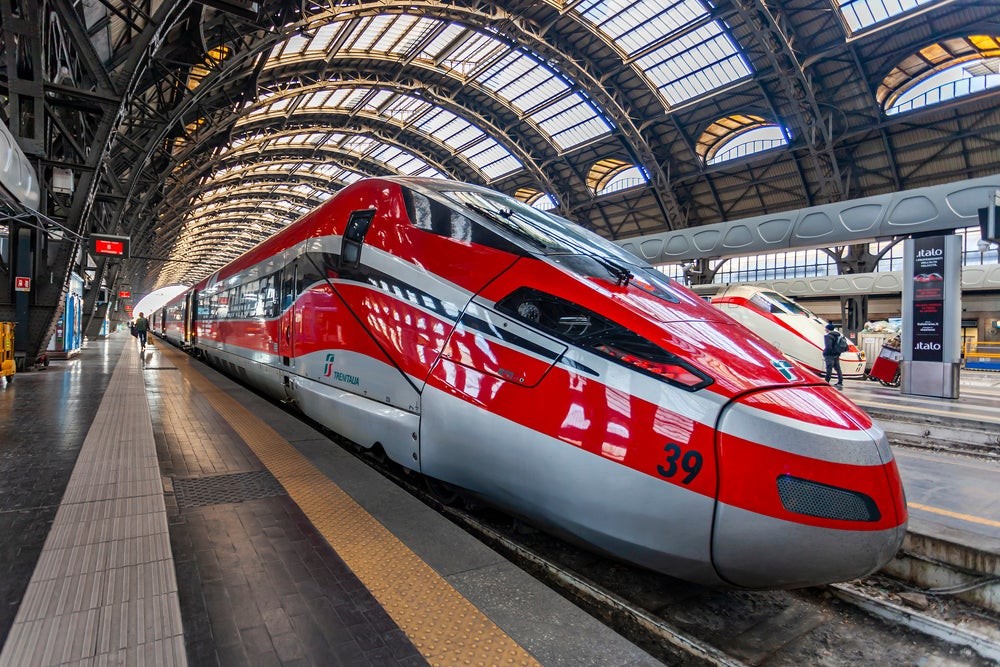 A Frecciarossa 1000 train speeds through the Italian countryside, showcasing its sleek design
A Frecciarossa 1000 train speeds through the Italian countryside, showcasing its sleek design
2.1. Shanghai Maglev: The Speed Champion
- Operational Speed: 460 km/h (286 mph)
- Record Speed: 501 km/h (311 mph)
- Technology: This train uses magnetic levitation (Maglev) to eliminate friction, allowing for incredibly smooth and quiet travel.
- Route: The Shanghai Maglev Line connects Longyang Road Station in Shanghai to Shanghai Pudong International Airport, covering 30.5 km (19 miles) in just under eight minutes.
2.2. CR Harmony: China’s High-Speed Pioneer
- Operational Speed: 350 km/h (217 mph)
- Record Speed: 486.1 km/h (302 mph)
- Technology: The CR Harmony series utilizes technology from global rolling stock manufacturers and has evolved into domestically produced models.
- Routes: These trains operate on various high-speed lines in China, offering efficient travel options between major cities.
2.3. CR Fuxing: The Fully Domestic Bullet Train
- Operational Speed: 350 km/h (217 mph)
- Record Speed: 420 km/h (261 mph)
- Technology: The CR Fuxing models are the first fully domestically produced high-speed trains in China, without relying on foreign technology.
- Routes: Known for their use on the Beijing–Shanghai high-speed railway, Fuxing sets are also used on several other lines in China, including the new high-speed connection to Tibet.
2.4. DB ICE: Germany’s Intercity Express
- Operational Speed: 330 km/h (205 mph)
- Record Speed: 368 km/h (229 mph)
- Technology: The ICE 3 family, manufactured by Siemens and Bombardier, includes classes 403, 406, 407, and 408, known as ICE 3, ICE 3M, New ICE 3, and ICE 3neo, respectively.
- Routes: These trains operate mainly within Germany but also offer cross-border routes to the Netherlands, Belgium, and France.
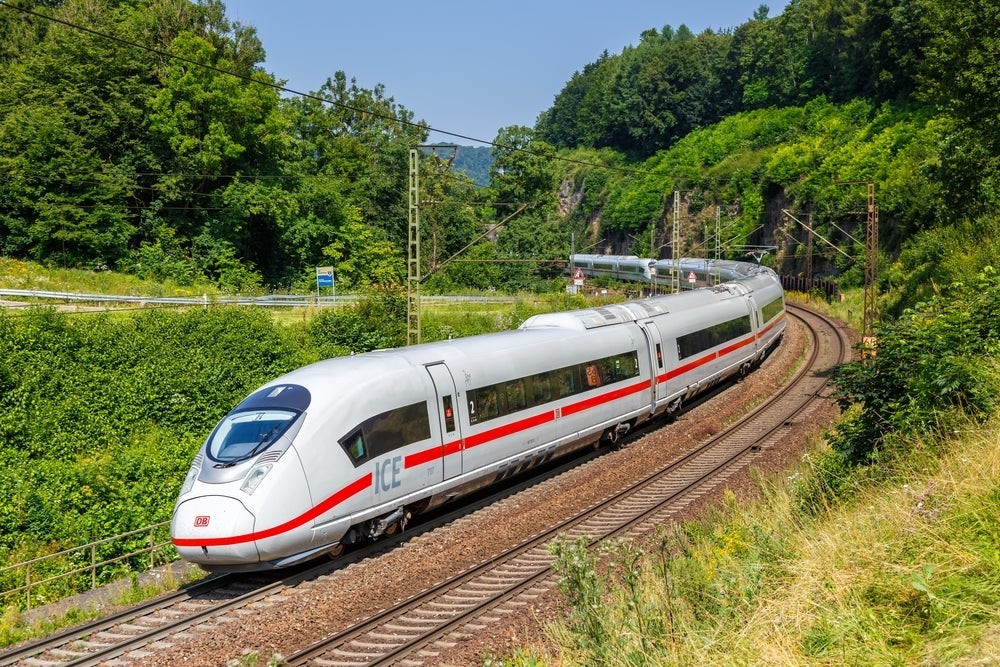 A DB ICE 3 train smoothly navigates a bend on the high-speed railway, illustrating its engineering prowess
A DB ICE 3 train smoothly navigates a bend on the high-speed railway, illustrating its engineering prowess
2.5. SNCF TGV: France’s Record-Breaking Train
- Operational Speed: 320 km/h (199 mph)
- Record Speed: 574.8 km/h (357 mph)
- Technology: Manufactured by Alstom and operated by SNCF, the TGV has consistently broken speed records since its inception.
- Routes: The SNCF TGV Network extends outside France, directly linking to Italy, Spain, Belgium, Luxembourg, and Germany.
2.6. JR Shinkansen: Japan’s Iconic Bullet Train
- Operational Speed: 320 km/h (199 mph)
- Record Speed: 443 km/h (275 mph)
- Technology: Japan’s Shinkansen was the first dedicated high-speed railway network. The current E5 and H5 Series, built by Hitachi Rail and Kawasaki Heavy Industries, hit a top operating speed of 320 km/h.
- Routes: The network spans almost 3,000 km of track, connecting distant Japanese regions with the capital, Tokyo.
2.7. ONCF Al Boraq: Africa’s First High-Speed Rail
- Operational Speed: 320 km/h (199 mph)
- Record Speed: 357 km/h (222 mph)
- Technology: The Al Boraq line uses Alstom Avelia Euroduplex (TGV 2n2f) trainsets. Notably, these Euroduplex trains are bi-level (double-decker), with a passenger capacity of 533.
- Routes: The line runs between Casablanca and Tangier, cutting journey times significantly.
2.8. Renfe AVE 103: Spain’s High-Speed Service
- Operational Speed: 310 km/h (193 mph)
- Record Speed: 403.7 km/h (251 mph)
- Technology: The Renfe Class 103 trains, manufactured by Siemens as part of the Velaro family, are used for its AVE high-speed service.
- Routes: These trains run on the Barcelona–Madrid high-speed railway, carrying up to 404 passengers at high speeds.
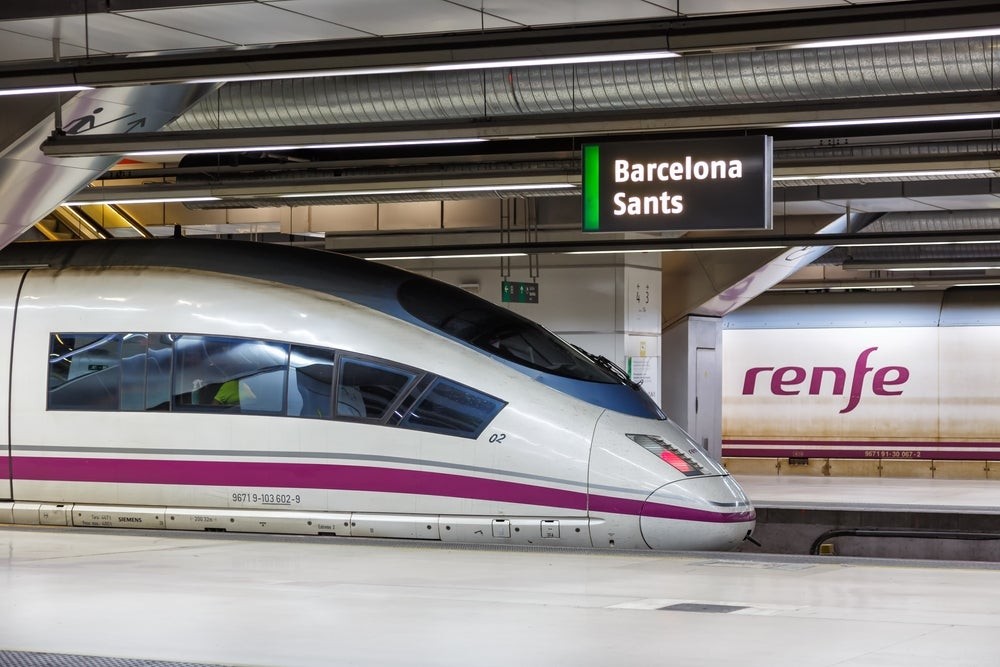 A Renfe AVE train at Barcelona Sants railway station, showcasing its modern design and efficiency
A Renfe AVE train at Barcelona Sants railway station, showcasing its modern design and efficiency
2.9. Korail KTX-Sancheon: South Korea’s High-Speed Train
- Operational Speed: 305 km/h (190 mph)
- Record Speed: 421.4 km/h (262 mph)
- Technology: The KTX-Sancheon is the first high-speed train designed and developed in South Korea, with a top operational speed of 305 km/h.
- Routes: These trains operate on South Korea’s high-speed rail network, providing efficient transportation across the country.
2.10. Trenitalia Frecciarossa 1000: Italy’s Red Arrow
- Operational Speed: 300 km/h (186 mph)
- Record Speed: 389 km/h (242 mph)
- Technology: Co-developed as a joint venture between Hitachi Rail Italy and Alstom, the Frecciarossa is also operating in Spain under the name Iryo.
- Routes: The ETR1000 trainsets carry 457 passengers in eight-car trains, operating on Italy’s high-speed rail network.
3. What Technologies Enable These High Speeds?
Achieving such impressive speeds requires advanced technology and engineering. Here are some key innovations that make bullet trains possible:
- Aerodynamic Design: Bullet trains feature sleek, aerodynamic designs to reduce air resistance. The shapes are carefully engineered to minimize drag, allowing the trains to move more efficiently at high speeds.
- Powerful Engines: These trains are equipped with powerful electric motors that provide the necessary thrust. Modern bullet trains often use distributed traction, where motors are placed throughout the train, rather than concentrated in a single locomotive.
- Advanced Suspension Systems: High-speed trains require sophisticated suspension systems to ensure a smooth ride. These systems minimize vibrations and maintain stability, even at top speeds.
- Dedicated Tracks: Bullet trains typically run on dedicated high-speed tracks that are designed and maintained to very high standards. These tracks often include features such as continuously welded rails and advanced signaling systems.
- Magnetic Levitation (Maglev): Some of the fastest trains, like the Shanghai Maglev, use magnetic levitation technology. Maglev trains float above the track, eliminating friction and allowing for even greater speeds.
4. What Are the Benefits of High-Speed Rail?
High-speed rail offers numerous advantages over traditional modes of transportation, making it an attractive option for travelers and a valuable asset for economies.
- Reduced Travel Time: The most obvious benefit is the significant reduction in travel time. Bullet trains can cover long distances much faster than conventional trains or cars, making them ideal for business and leisure travelers alike.
- Increased Efficiency: High-speed rail can transport a large number of passengers quickly and efficiently. This helps to reduce congestion on roads and at airports, making overall transportation systems more efficient.
- Environmental Benefits: Bullet trains are generally more environmentally friendly than air travel or driving. They produce fewer emissions per passenger mile, helping to reduce carbon footprints and promote sustainable transportation. According to a study by the International Energy Agency, high-speed rail emits significantly less CO2 per passenger-kilometer compared to air travel.
- Economic Growth: High-speed rail can stimulate economic growth by connecting cities and regions, facilitating trade and commerce, and creating jobs. The construction and operation of high-speed rail lines can also generate significant economic activity.
- Enhanced Connectivity: Bullet trains improve connectivity between cities and regions, making it easier for people to travel for work, leisure, and education. This enhanced connectivity can also promote tourism and cultural exchange.
- Safety: High-speed rail is generally considered a safe mode of transportation. Modern bullet trains are equipped with advanced safety systems, and high-speed rail lines are designed to minimize the risk of accidents.
- Comfort and Convenience: Bullet trains offer a comfortable and convenient travel experience. Passengers can relax, work, or enjoy the scenery while traveling at high speeds. Many bullet trains also offer amenities such as Wi-Fi, power outlets, and comfortable seating.
5. What Are Some Notable High-Speed Rail Projects Around the World?
Several countries have invested heavily in high-speed rail projects, recognizing the numerous benefits it offers. Here are some notable examples:
- Japan’s Shinkansen: As the pioneer of high-speed rail, Japan’s Shinkansen network continues to be a global leader. The network spans almost 3,000 km and connects major cities across the country.
- China’s High-Speed Rail Network: China has built the world’s largest high-speed rail network in just a few years. The network spans over 38,000 km and connects major cities across the country.
- Europe’s High-Speed Rail Network: Europe has an extensive high-speed rail network that connects cities across multiple countries. Notable examples include France’s TGV, Germany’s ICE, and Spain’s AVE.
- California High-Speed Rail: The California High-Speed Rail project aims to connect Los Angeles and San Francisco with a high-speed rail line. Although facing challenges, the project has the potential to transform transportation in California.
- HS2 in the UK: HS2 is a planned high-speed railway in the United Kingdom that will connect London, Birmingham, and northern cities. The project is expected to improve connectivity and boost economic growth.
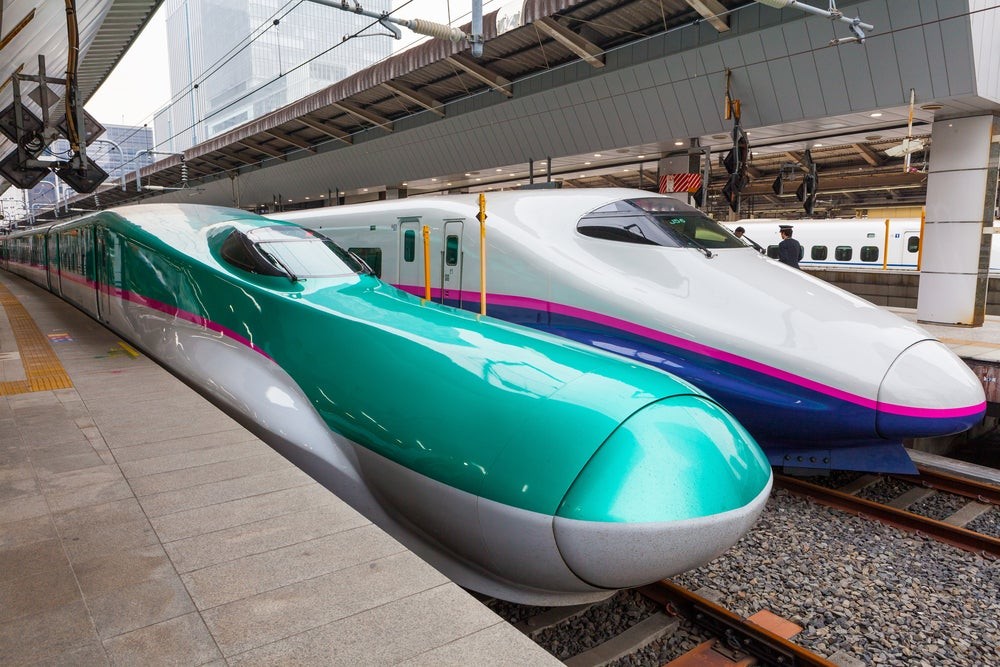 A Japanese Shinkansen bullet train elegantly speeds through the countryside, showcasing its iconic design
A Japanese Shinkansen bullet train elegantly speeds through the countryside, showcasing its iconic design
6. How Do Bullet Trains Compare to Other Modes of Transportation?
Bullet trains offer a unique combination of speed, efficiency, and comfort that sets them apart from other modes of transportation. Here’s a comparison:
- Bullet Trains vs. Air Travel: Bullet trains are often faster and more convenient than air travel for short to medium distances. They eliminate the need to travel to and from airports, go through security checks, and deal with flight delays. Additionally, bullet trains are generally more environmentally friendly than airplanes.
- Bullet Trains vs. Cars: Bullet trains are much faster than cars for long distances. They also offer a more relaxing and productive travel experience, as passengers can relax, work, or enjoy the scenery without having to drive. Additionally, bullet trains help to reduce traffic congestion and emissions.
- Bullet Trains vs. Traditional Trains: Bullet trains are significantly faster than traditional trains. They also offer a more comfortable and modern travel experience, with amenities such as Wi-Fi, power outlets, and comfortable seating.
7. What Is the Future of Bullet Train Technology?
The future of bullet train technology looks promising, with ongoing advancements that are expected to further enhance speed, efficiency, and sustainability. Some key trends include:
- Maglev Technology: Maglev technology is expected to become more widespread, allowing for even faster and smoother train travel. Several countries are currently exploring the construction of new Maglev lines.
- Hyperloop Technology: Hyperloop is a new transportation concept that involves traveling in pods through low-pressure tubes. While still in the early stages of development, Hyperloop has the potential to revolutionize transportation and achieve speeds exceeding 1,000 km/h.
- Improved Energy Efficiency: Ongoing research and development efforts are focused on improving the energy efficiency of bullet trains. This includes the use of lighter materials, more efficient engines, and regenerative braking systems.
- Smart Train Technology: Smart train technology involves the use of sensors, data analytics, and artificial intelligence to optimize train operations, improve safety, and enhance the passenger experience.
8. How to Experience Bullet Train Travel?
Experiencing bullet train travel is easier than you might think. Many countries offer high-speed rail services, and booking tickets is often straightforward.
- Research Destinations: Start by researching destinations that are accessible by high-speed rail. Popular options include Japan, China, Europe, and South Korea.
- Book Tickets in Advance: It’s often a good idea to book tickets in advance, especially during peak travel seasons. This will help you secure the best prices and ensure that you get a seat on the train.
- Check Schedules and Routes: Before you travel, be sure to check the schedules and routes of the bullet trains. This will help you plan your itinerary and make sure that you arrive at your destination on time.
- Pack Appropriately: Pack light and bring essentials such as water, snacks, and entertainment. You may also want to bring a travel pillow and blanket for added comfort.
- Enjoy the Ride: Once you’re on the train, sit back, relax, and enjoy the ride. Take in the scenery, read a book, or catch up on work.
9. Why Choose TRAVELS.EDU.VN for Your High-Speed Rail Adventure?
At TRAVELS.EDU.VN, we specialize in creating unforgettable travel experiences. Here’s why you should consider us for your next high-speed rail adventure:
- Tailored Travel Solutions: We offer customized travel itineraries that cater to your specific interests and preferences. Whether you’re interested in exploring historical sites, experiencing local culture, or simply enjoying the scenery, we can create a trip that’s perfect for you.
- Expert Guidance: Our team of travel experts has extensive knowledge of high-speed rail networks around the world. We can provide you with valuable insights and recommendations to help you plan the perfect trip.
- Seamless Booking: We offer a seamless booking process that makes it easy to reserve your train tickets, accommodations, and activities. Our user-friendly website and dedicated customer service team are here to assist you every step of the way.
- Exclusive Deals: We have established partnerships with leading high-speed rail operators and hotels, allowing us to offer exclusive deals and discounts to our customers.
- 24/7 Support: We provide 24/7 support to ensure that your trip goes smoothly. Whether you have a question, need assistance, or encounter an unexpected issue, our team is always available to help.
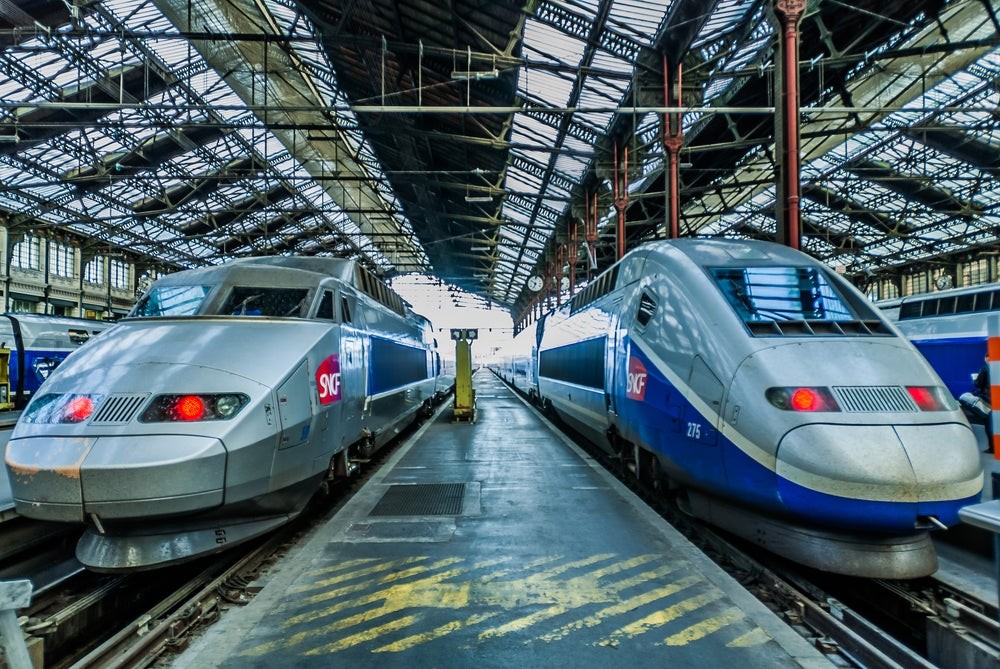 An interior view of a bullet train, showcasing the comfortable seating and spacious environment conducive to relaxation
An interior view of a bullet train, showcasing the comfortable seating and spacious environment conducive to relaxation
10. Ready to Plan Your High-Speed Rail Adventure?
Understanding how fast does bullet train travel is just the beginning. The real excitement comes from experiencing it firsthand. High-speed rail is transforming the way we travel, offering a faster, more efficient, and more sustainable alternative to traditional modes of transportation. Whether you’re a seasoned traveler or a first-time explorer, a bullet train journey is sure to be an unforgettable experience.
Don’t miss out on the opportunity to experience the thrill of high-speed rail. Contact TRAVELS.EDU.VN today to start planning your next adventure. Our expert team is ready to create a customized itinerary that meets your specific needs and preferences.
Contact Us Today!
- Address: 123 Main St, Napa, CA 94559, United States
- WhatsApp: +1 (707) 257-5400
- Website: TRAVELS.EDU.VN
Let TRAVELS.EDU.VN be your guide to the world of high-speed rail. Experience the speed, comfort, and convenience of bullet train travel and create memories that will last a lifetime.
FAQ: Everything You Need to Know About Bullet Trains
Q1: How fast does bullet train travel compared to regular trains?
Bullet trains typically operate at speeds between 200 km/h (124 mph) and 350 km/h (220 mph), while regular trains usually travel at speeds between 80 km/h (50 mph) and 160 km/h (100 mph). This makes bullet trains significantly faster.
Q2: What makes bullet trains so fast?
Bullet trains achieve high speeds due to their aerodynamic design, powerful engines, advanced suspension systems, and dedicated tracks. Some trains, like the Shanghai Maglev, use magnetic levitation (Maglev) technology to eliminate friction and achieve even greater speeds.
Q3: Are bullet trains safe?
Yes, bullet trains are generally considered a safe mode of transportation. They are equipped with advanced safety systems, and high-speed rail lines are designed to minimize the risk of accidents.
Q4: How much does it cost to ride a bullet train?
The cost of riding a bullet train varies depending on the distance, class of service, and specific train operator. Generally, bullet train tickets are more expensive than regular train tickets but can be competitive with air travel, especially when considering the convenience and time savings.
Q5: Are bullet trains environmentally friendly?
Yes, bullet trains are generally more environmentally friendly than air travel or driving. They produce fewer emissions per passenger mile, helping to reduce carbon footprints and promote sustainable transportation.
Q6: What are the benefits of traveling by bullet train?
The benefits of traveling by bullet train include reduced travel time, increased efficiency, environmental benefits, economic growth, enhanced connectivity, safety, comfort, and convenience.
Q7: Where can I experience bullet train travel?
You can experience bullet train travel in several countries, including Japan, China, Europe, and South Korea. Each region offers unique high-speed rail experiences, with modern trains and scenic routes.
Q8: How do I book a ticket for a bullet train?
You can book a ticket for a bullet train online through the train operator’s website or through a travel agency. It’s often a good idea to book tickets in advance, especially during peak travel seasons.
Q9: What amenities are available on bullet trains?
Bullet trains typically offer a range of amenities, including comfortable seating, Wi-Fi, power outlets, and onboard food and beverage services. Some trains also offer additional amenities, such as private compartments and business lounges.
Q10: Can TRAVELS.EDU.VN help me plan my bullet train trip?
Yes, travels.edu.vn specializes in creating unforgettable travel experiences, including high-speed rail adventures. We offer tailored travel solutions, expert guidance, seamless booking, exclusive deals, and 24/7 support to ensure that your trip is a success.
